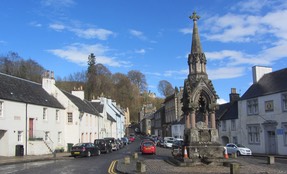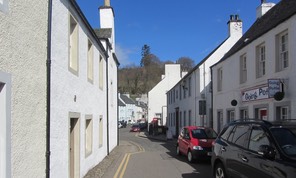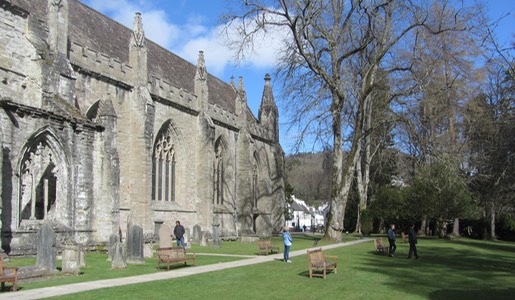One of Scotland's architecturally most attractive settlements has held a pivotal role both geographically and historically for centuries. Located like a fulcrum close to the centre of Scotland's land mass, Dunkeld was founded in Pictish times and became a leading medieval ecclesiastical centre.

The Reformation devastated its grand Cathedral and the early village was initially damaged in the first Jacobite rising (1689) and virtually obliterated in subsequent military action.
Rebuilding created today's 18th century vernacular High Street parallel to the River Tay with a 'Y' fork at the west end. A triangular Market Cross originally opened towards Dunkeld House by Sir William Bruce (c.1680) demolished in 1827, and to the left became Cathedral Street. This 18th century plan remained until in a bid to improve travel between Edinburgh and the Highlands a bridge was built. The elegant seven arch structure channelled all traffic through the town increasing local prosperity and creating the Georgian style Atholl Street perpendicular to the original High St.
Dunkeld Bridge was a direct result of star engineer Thomas Telford winning a prestigious commission from the Lords of the Treasury in London (1802) to survey the Scottish Highlands. His findings indicated that surviving military roads were inadequate and principal routes were seriously interrupted by absence of bridges. Telford's design for Dunkeld Bridge completed in 1809 at a cost of £14000 was part funded by the Duke of Atholl - an early PPP?

Opposition to the Duke charging a bridge toll is reported to have been behind an explosion which damaged the Hermitage in 1869. Designed as a pleasure ground for Dunkeld House the area is majestically planted with giant trees around a Georgian Folly, Ossian's Hall, built in 1758, as a viewing grotto overlooking the Falls of Braan.
Navigating the transverse topographical grain north of the nearby Highland Fault line traditionally demanded ingenuity. Engineering brought many new opportunities. The opening of railways along with the advent of steam ships on larger waterways as at Loch Tay transformed Highland accessibility. Excavation, tunnelling and long span bridges replaced ferries and long historical drove routes greatly reducing journey times and improving communication.
Indirectly this lead to an even more significant influence on highland life - Royal Patronage. In 1842 Queen Victoria and the Prince Consort first British monarch to visit the Highlands arriving at Dunkeld to begin what became her life long passion and admiration for Scotland's uplands. In setting up Balmoral Castle as her royal holiday retreat, the Queen popularised mountain landscapes, wildlife, bagpipes, tartans, and even whisky. Many credit this patronage as the catalyst for Scotland's immensely successful tourism industry. Rekindled interest in Scottish traditions, music and sport strenghtened the annual Highland Gathering which had been inaugurated at Dunkeld in 1822. Scottish gatherings ran here for 50 years and still continue to develop across the bridge in Birnam and around the world wherever a Scottish ex-pat community exists.

Dunkeld Cathedral
However as the engineer give-eth, so the engineer take-eth away. Much of the vitality, and prosperity which enlivened rural communities and transformed the Highlands through improved transport links may now be refocussing. The Perth Dunkeld railway now goes direct to Inverness and beyond and modern civil engineering permits the A9 to by-pass all bar the largest settlements. The enduring charms of Dunkeld as the gateway to the Highlands and as a beautifully preserved 18th century vernacular township will ensure a continuing value for Scotland’s fulcrum.
565 words